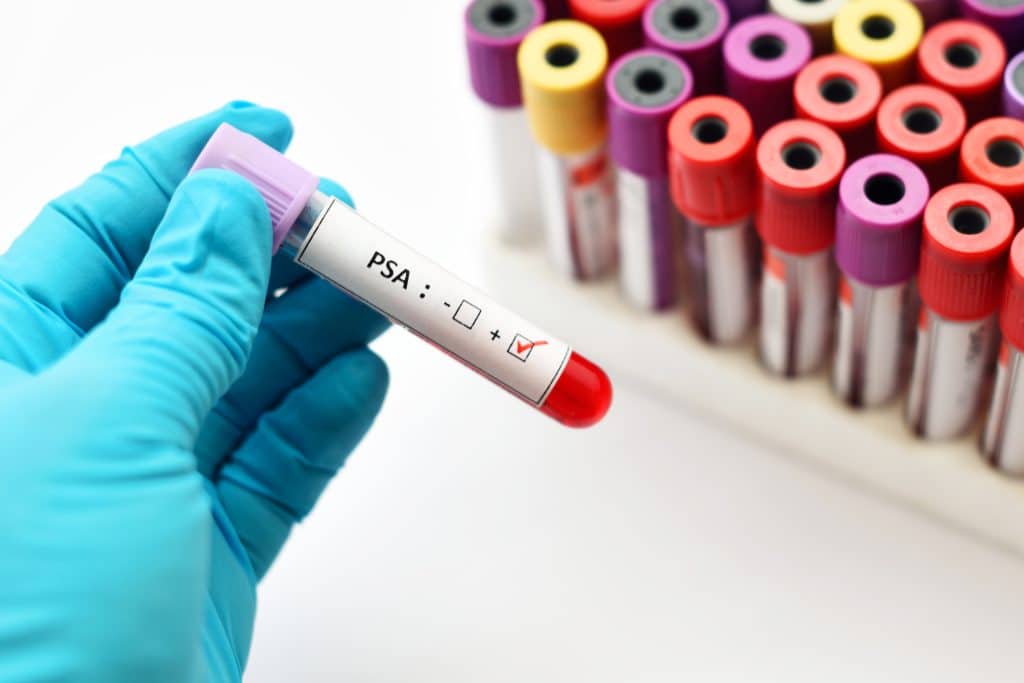The PSA test is helpful in detecting prostate cancer, but has its drawbacks.

If you’re a man who expects to live past 50, expect to hear a lot about prostate cancer detection, treatment and the prostate specific antigen (PSA). Commonly referred to as the PSA, this is a protein produced in the prostate glands that indicates prostate cancer (as well as other irregularities of the prostate, such as benign prostatic hyperplasia or BPH). The PSA marker has been one of the most revolutionary discoveries in men’s health.
The prostate consists of hundreds of proteins and a group of dedicated research physicians in the 1970s set out to discover the one that indicated prostate cancer. The Food and Drug Administration (FDA) approved the first diagnostic kit in 1986 and in 1994 the kit was approved as a screening aid for diagnosis.
Before early detection of prostate cancer with a PSA test was possible, a prostate cancer diagnosis was often made at a late stage with a 5 percent cure rate. The PSA exam now contributes to 80-90 percent cure rates in modern day prostate cancer diagnoses.
PSA testing is simple. A small blood sample is drawn and sent to a laboratory. Results are reported in a ratio of nanograms of PSA for every mL of blood. PSA levels below 4.0 ng/mL are generally considered normal. The higher the PSA level, the more likely a man has prostate cancer. If a PSA exam comes back high, a biopsy ultimately can confirm whether or not the patient has prostate cancer.
In 2011, the United States Preventive Service Task Force (USPSTF) recommended reducing PSA screenings for men. This task force was comprised of 16 volunteer clinicians including family physicians, general internal medicine physicians, nurses, obstetrician-gynecologists, occupational medicine physicians and pediatricians – there were no urologists directly involved in the recommendation. The task force went so far as to recommend PSA screening only when symptoms are present. The problem is that prostate cancer is slow growing and it is usually in its later stages when men start experiencing symptoms. Urology Associates believes that this recommendation is a disservice to all men.
If your PSA is high, consult a urologist
When changing the PSA screening guidelines, the USPSTF should have clarified and recommended that all men, no matter their risk of prostate cancer, be under the treatment of a urologist, not a primary care provider when it comes to prostate health. The American Urologic Association and Urology Associates recommend an annual prostate exam and PSA test in low-risk individuals every other year for men ages 55-69.
One in 6 men will at some time be diagnosed with prostate cancer, but only 1 in 35 will die from it, thanks to advancements like the PSA. Men with a family history of prostate cancer should consult with their primary care provider or urologist to decide when to start screening. Most men should get PSA screening once they turn 55 if they do not have a family history of prostate cancer.
For undetermined reasons, men of African and Caribbean descent are more prone to prostate cancer, while Asian men are not. Other risk factors of prostate cancer include being obese, aging and certain inherited genetic mutations. Diet may also play a role in susceptibility to prostate cancer. Men who eat higher levels of red meat or dairy products and fewer levels of vegetables have a slightly higher chance of prostate cancer.
The best step men can take toward proactive prostate health is to have an active and engaged relationship with their primary physician or urologist so they can understand all the implications of the PSA – and what to do with the results once they have them.
While the PSA is not perfect, it remains an important indicator for potential prostate issues. Men should talk to their primary care provider today to determine if they should get a PSA this year.

